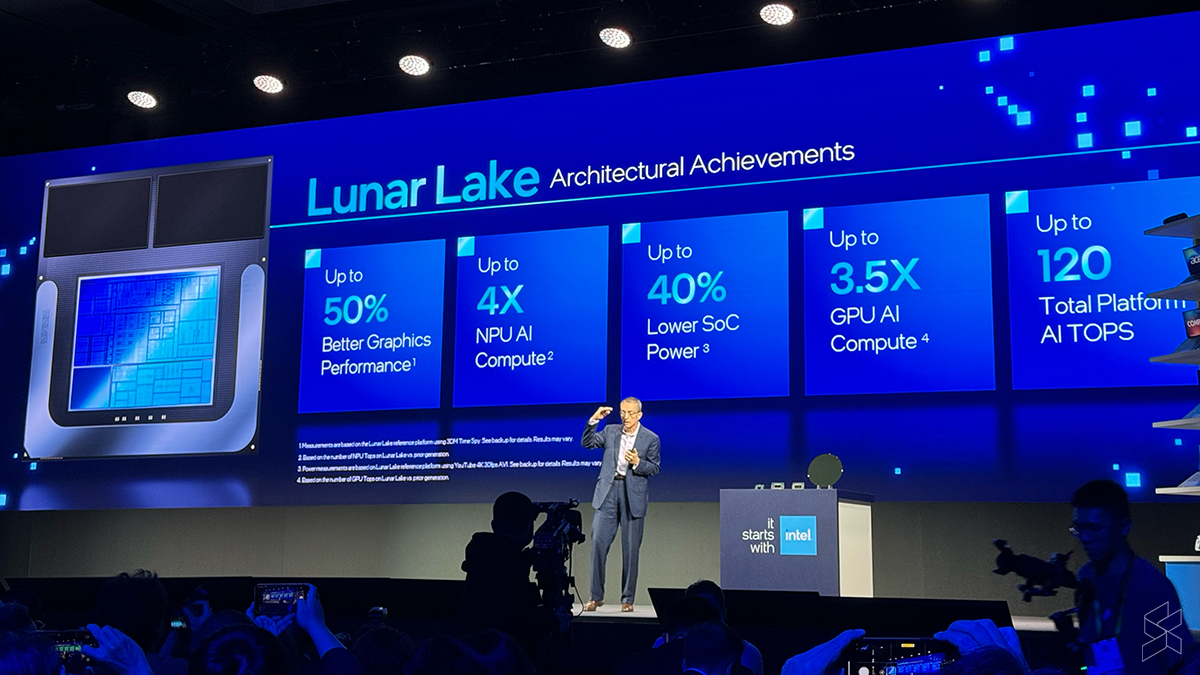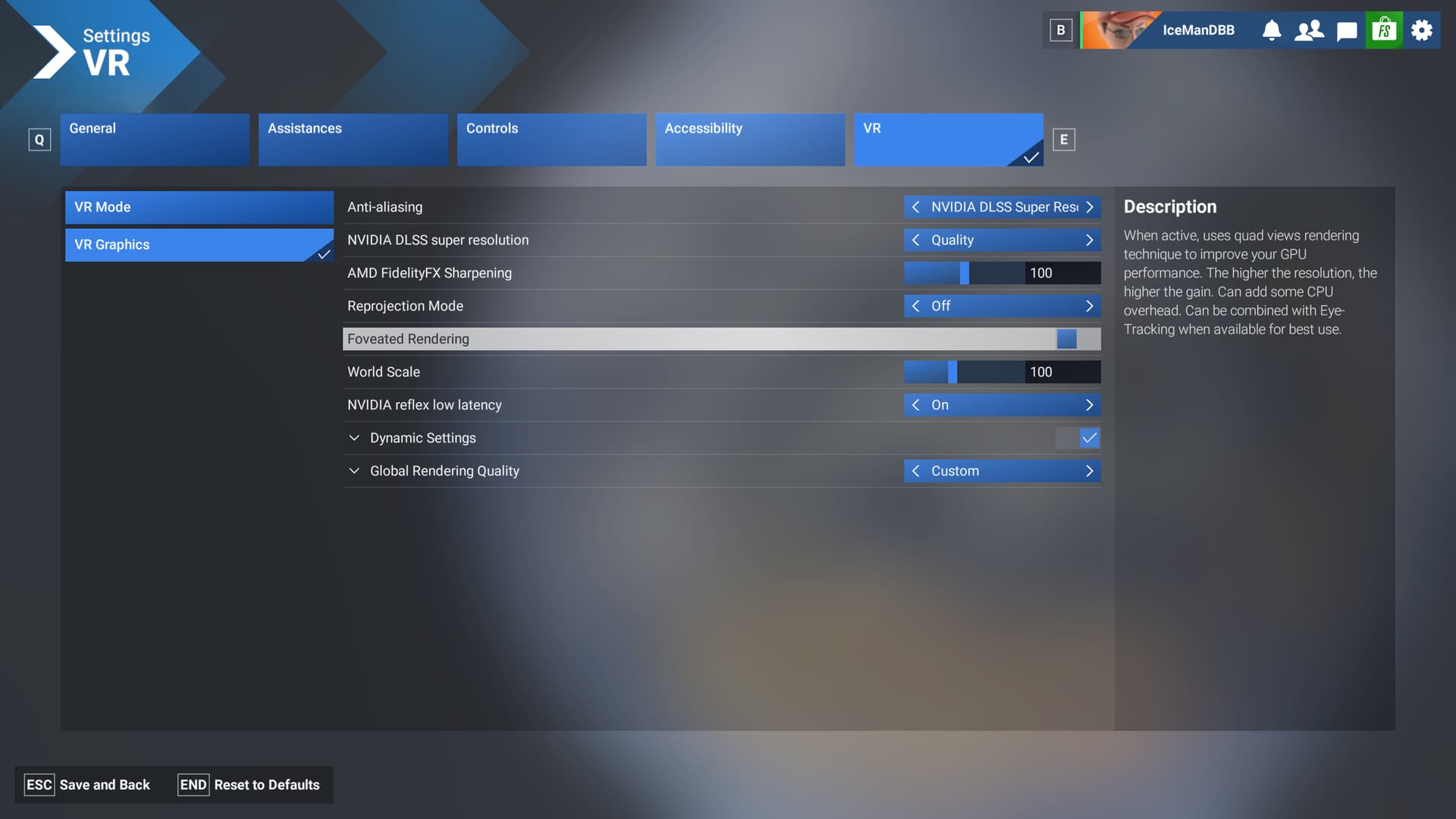Today at Computex 2024, Intel has finally lifted the veil on Lunar Lake, the architecture that will power their upcoming lineup of processors. Just like Meteor Lake before it, Lunar Lake represents a radical shift in how Intel is designing and building their processors, and if their claims are true, we would see major improvements in both performance and efficiency.
Hyperthreading is no more
Perhaps the most interesting thing about Lunar Lake for many a reader is that it isn’t being made by Intel. Okay maybe not exactly; Intel did design it and package it together, but the actual compute tile that houses its performance and efficiency cores (P-cores and E-cores) as well as the integrated GPU and NPU are being fabbed by TSMC on their N3B process node. Then there’s also the platform controller tile (formerly called the ‘SoC tile’) that takes care of connectivity and security being fabbed by TSMC on their N6 process node. All of that gets put together by Intel using their Foveros advanced packaging technology to create a distinctly unique Intel Core Ultra chip.
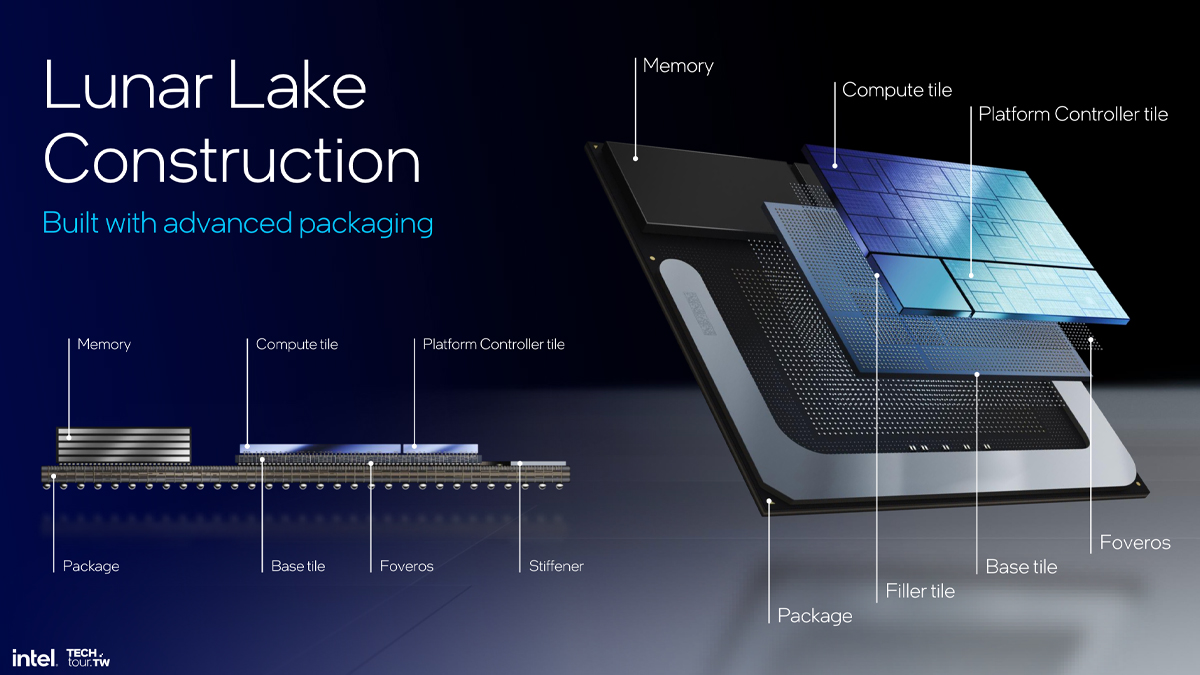
Lunar Lake will feature four of those P-cores, dubbed Lion Cove. There aren’t any clock speed numbers for now, but Intel does state that with Lion Cove, the goal was for more performance and area efficiency, essentially optimising both performance-per-watt and performance-per-area. Part of this move required Intel to actually drop their hyperthreading technology for Lion Cove, meaning that Lunar Lake will have four P-cores with four threads in this department.
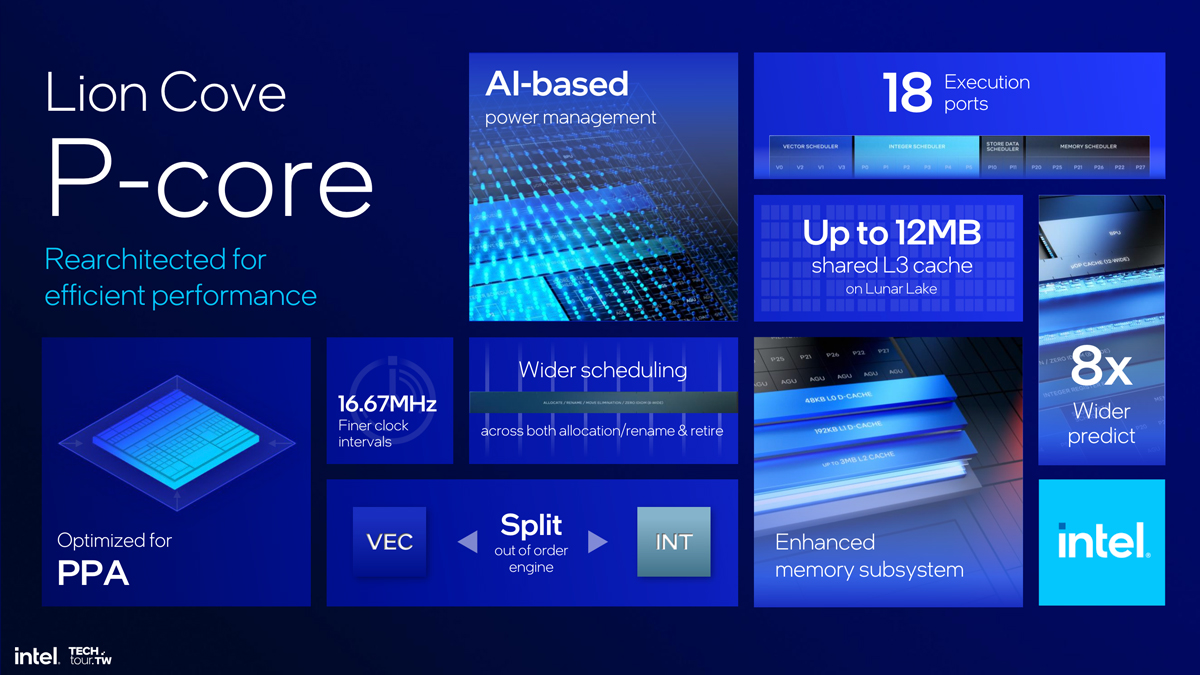
The reason is that while hyperthreading does improve the overall performance, it requires additional power to do so. As such, Intel is dropping hyperthreading support in a big to boost power efficiency; they say that by optimising Lion Cove for single-threaded performance, Lunar Lake’s P-cores offer 15% improved performance-to-power-and-area compared to if it was optimised with hyperthreading on. Furthermore, to extract even more performance on a given power budget, these P-cores are able to speed up and down in 16.67MHz intervals, compared to the traditional 100MHz intervals. Overall, Lion Cove is able to offer 14% IPC improvements over its predecessor with up to 18% performance improvements compared to Meteor Lake.
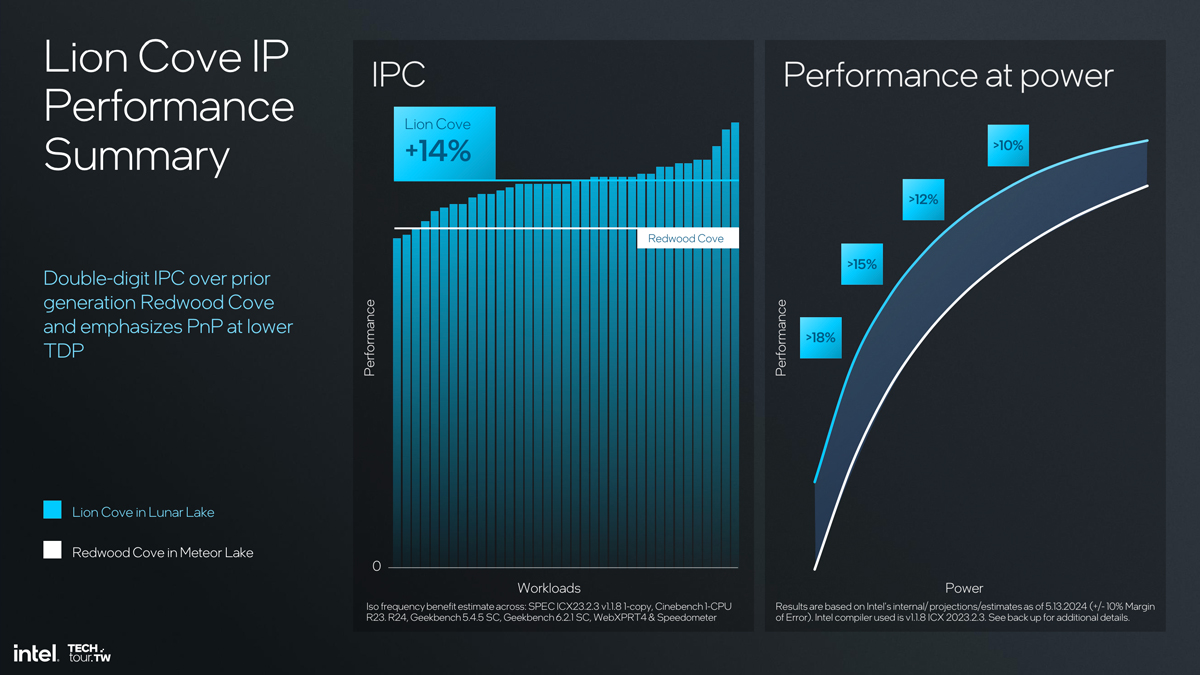
As for the E-cores, this cluster of up to four efficiency cores, codenamed Skymont, now replaces both the traditional E-cores and the Low Power Island E-cores in Meteor Lake. These Skymont E-cores are a bit of a hybrid between the two, offering efficiency gains together improved performance; Intel claims that Skymont E-cores uses a third of the power to hit the same performance as its predecessor, while being able to perform four times better at higher power.
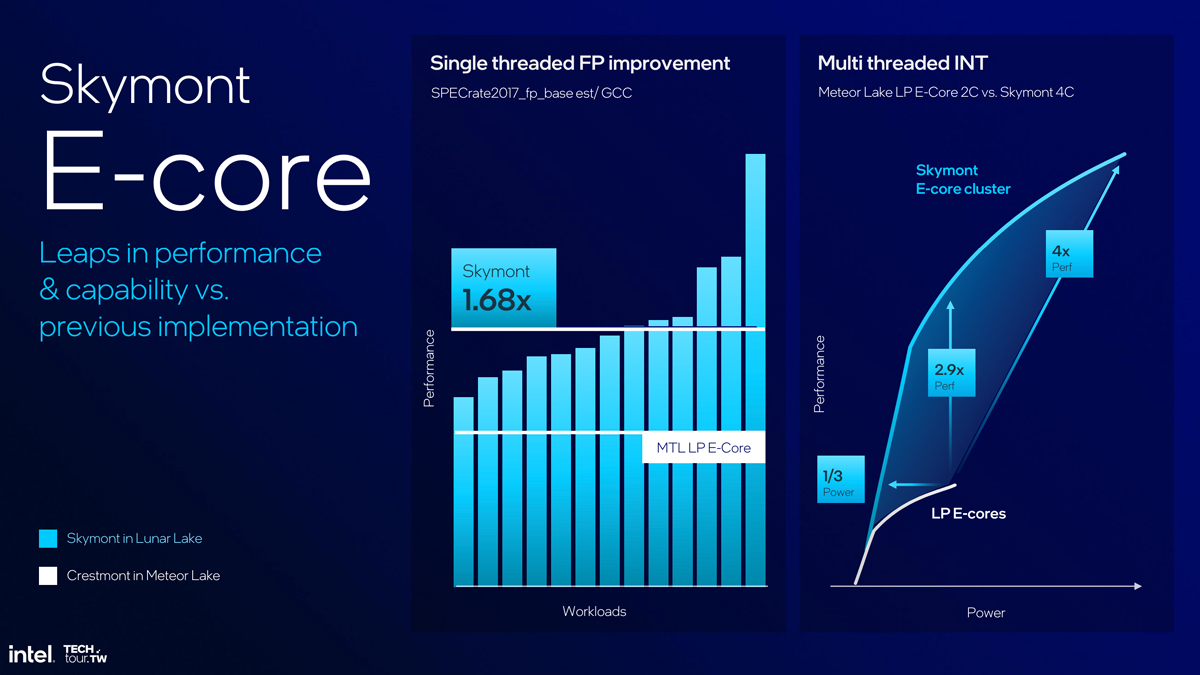
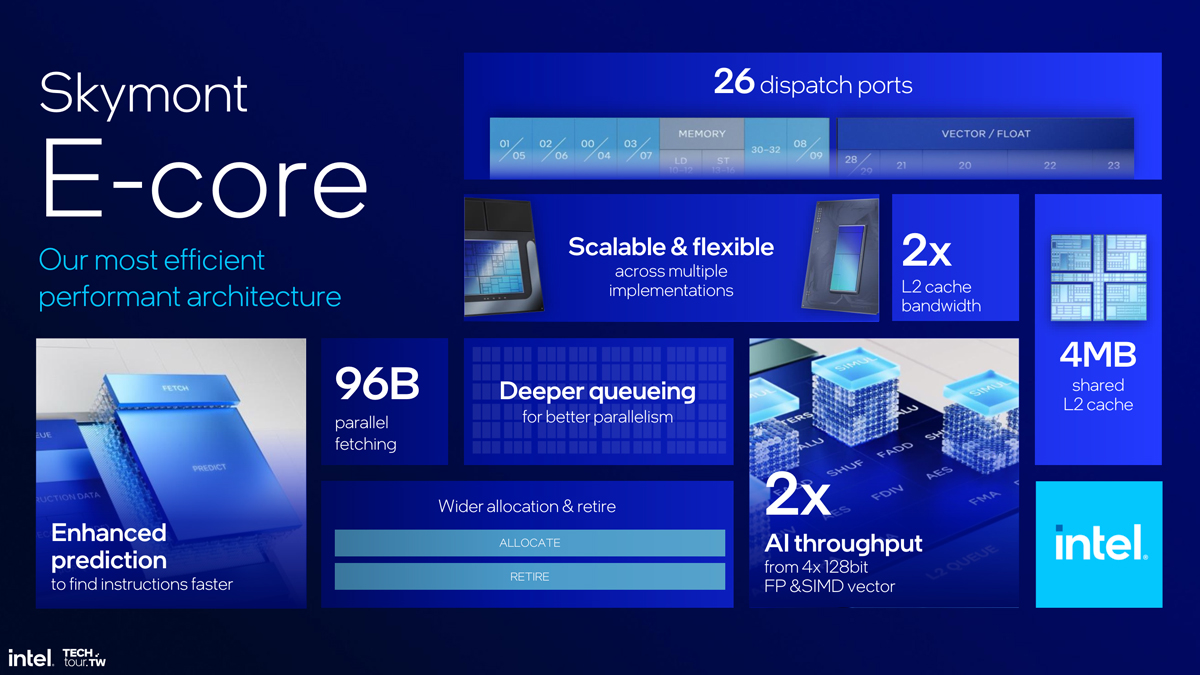
Together with the Lion Cove P-cores, Lunar Lake offers up to 80% performance-per-watt gains while still managing up to 50% higher peak performance.
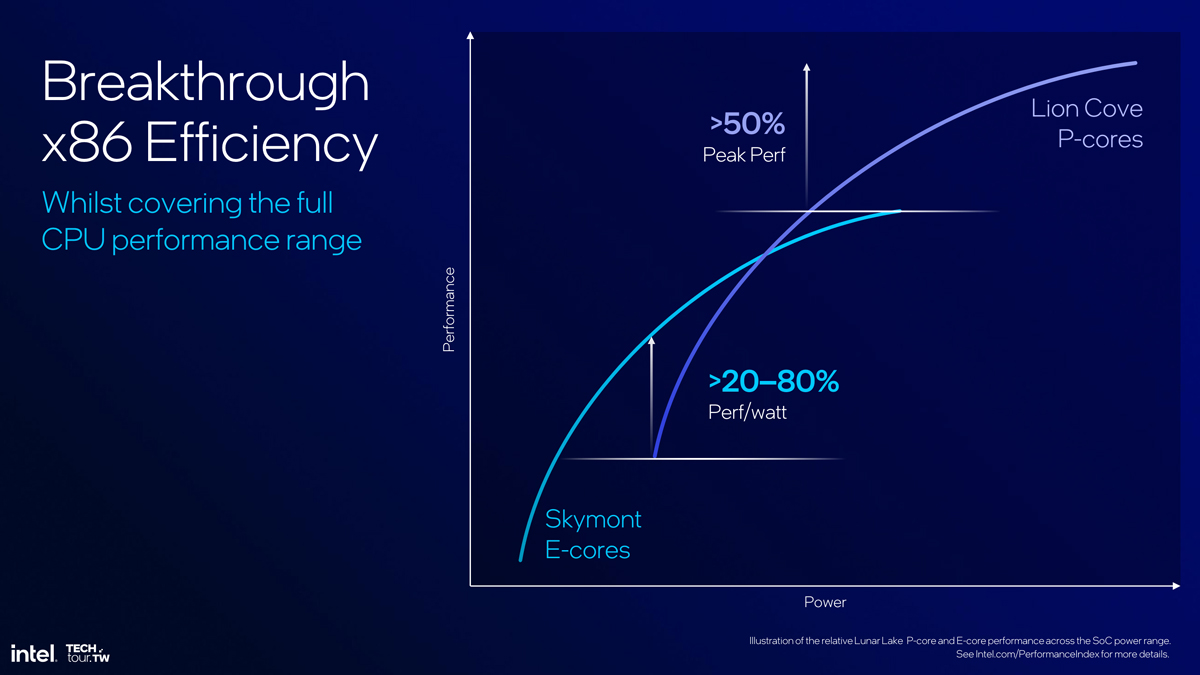
Another first for Intel is that Lunar Lake will see the giant move the memory onto the chip package. While this does mean that you won’t be able to ‘upgrade’ your laptop with more RAM down the line, this does give Lunar Lake some advantages such as faster access to data, reduced latency, and reduced overall power consumption.
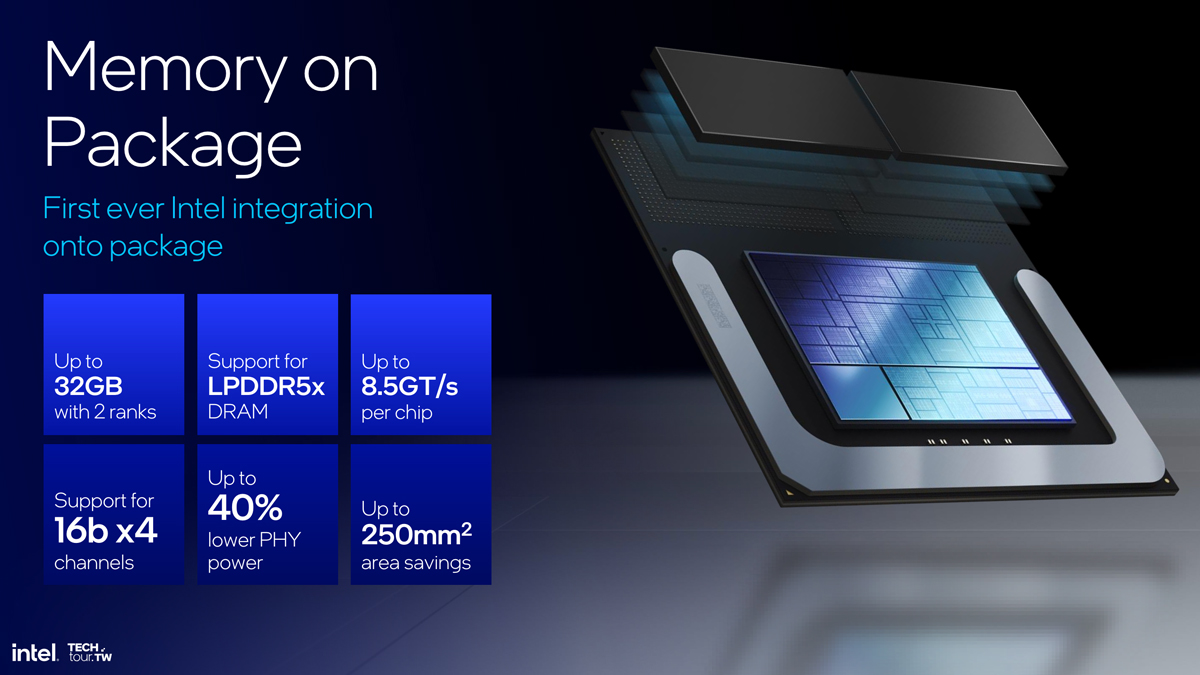
It can support up to 32GB of LPDDR5X memory on the chip package, positioned as a pair of 64-bit memory chips sitting above the chip itself.
Xe2 graphics debuts
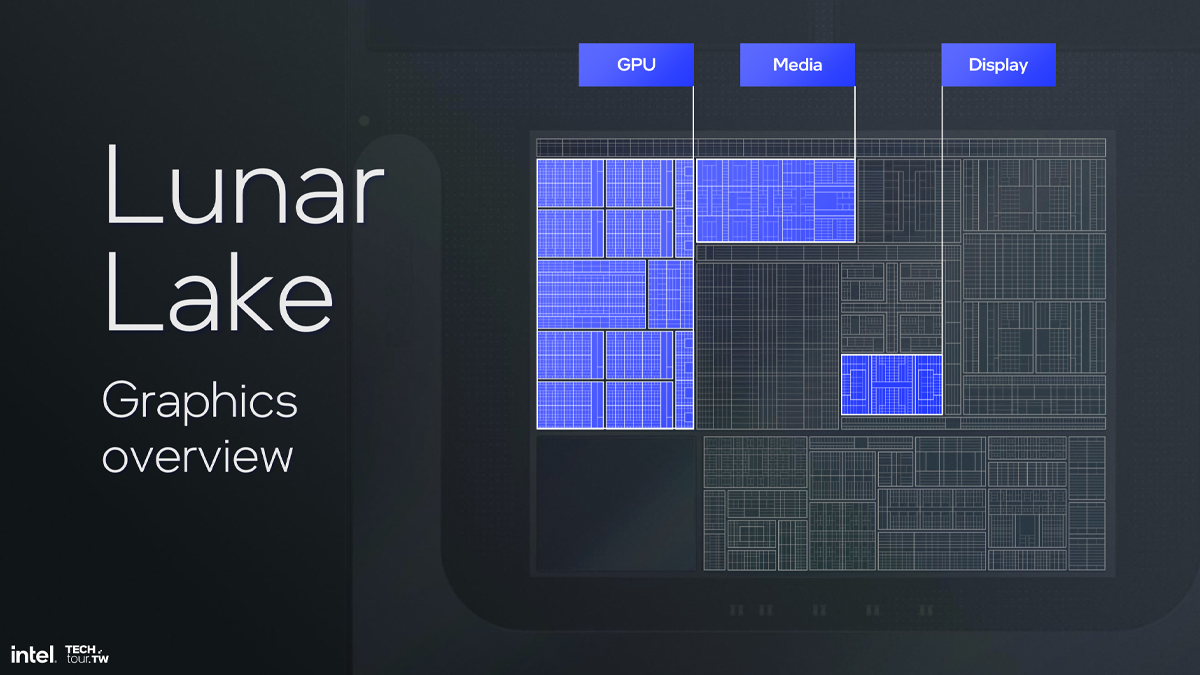
With the Lunar Lake CPU cores then are the brand new Intel Xe2 GPU cores. While you won’t really be using the iGPU here for gaming (you’ll want to wait for the Intel Battlemage discrete GPU for that), it still offers decent enough performance, with eight of these second generation Xe cores that have been optimised for higher efficiency and reduced overhead. There’s also eight enhanced ray tracing units present along with XeSS support for an overall performance boost of 1.5x at the same power threshold vs the previous generation. Intel however is really pushing its AI capabilities instead of gaming, as the up to 8 Xe2 cores with XMX AI acceleration offer up to 67 TOPS of performance.
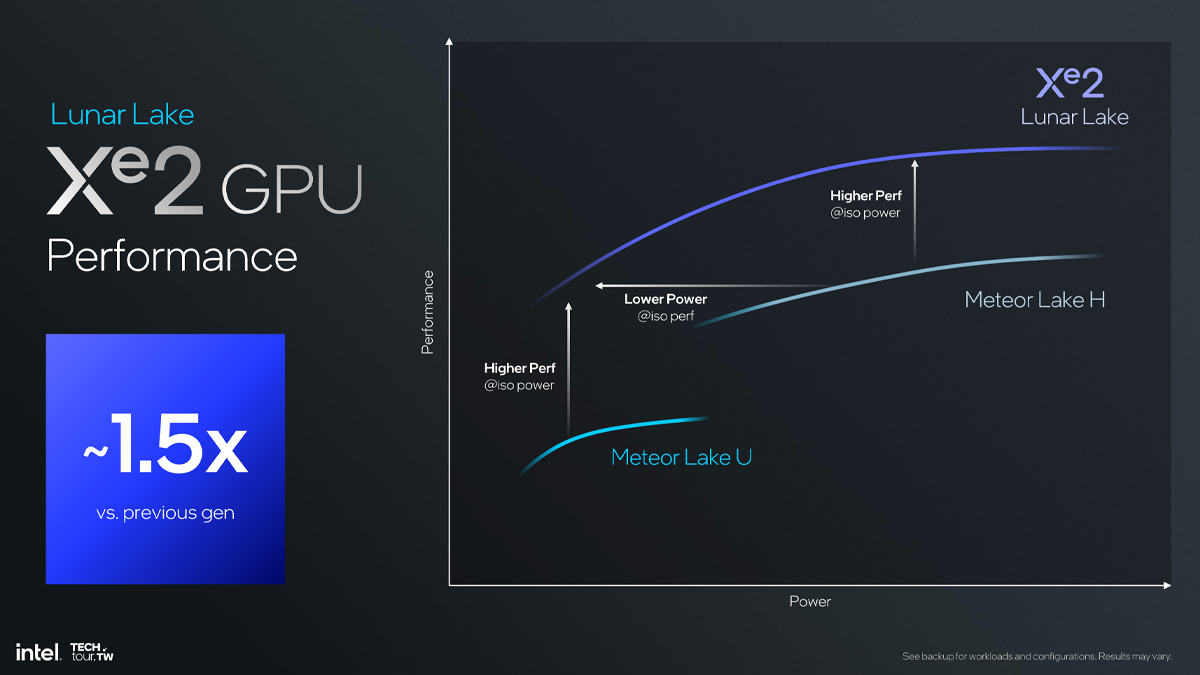
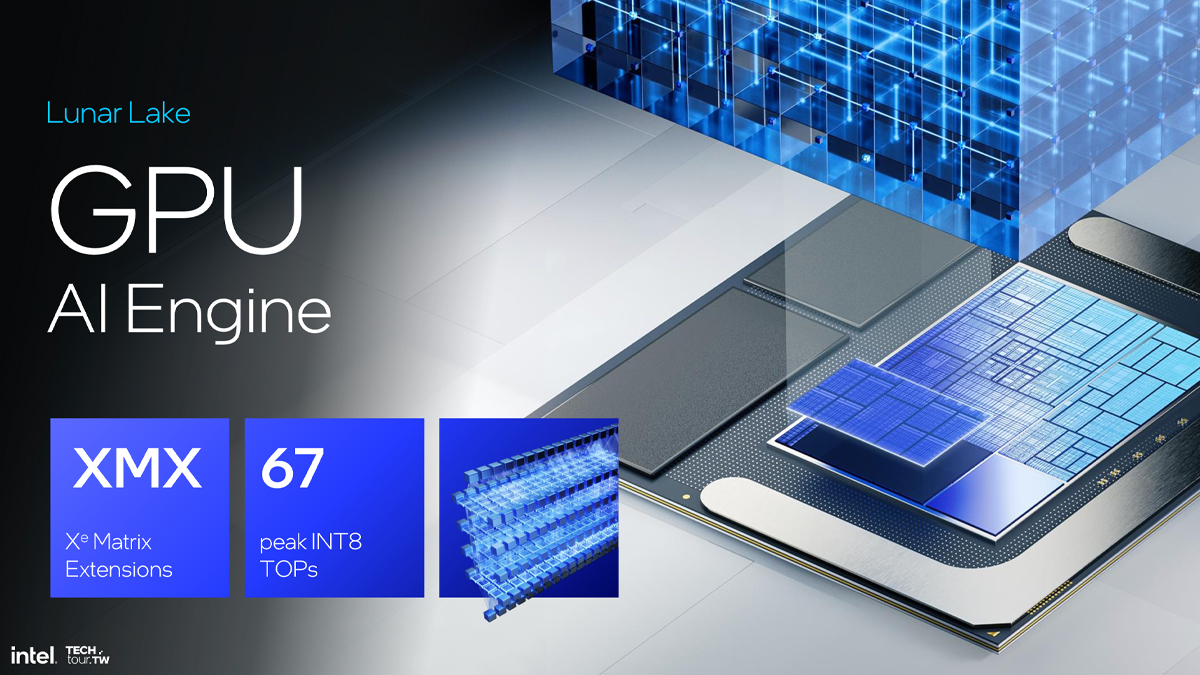
On top of that, there’s also a new Xe Media Engine and an Xe Display Engine, separate from the GPU itself. The media engine offers support for up to 8K60 10-bit HDR decode as well as VVC decode that offers reduced bitrate at the same quality. The display engine meanwhile has three display pipes to take care of output, with up to 8K60 HDR, three 4K60 HDR, and even 360Hz output for 1440p. It supports the regular HDMI 2.1 and DisplayPort 2.1 standards along with eDisplayPort 1.5 that has features like adaptive sync with panel replay.
Two Thunderbolt 4 ports guaranteed
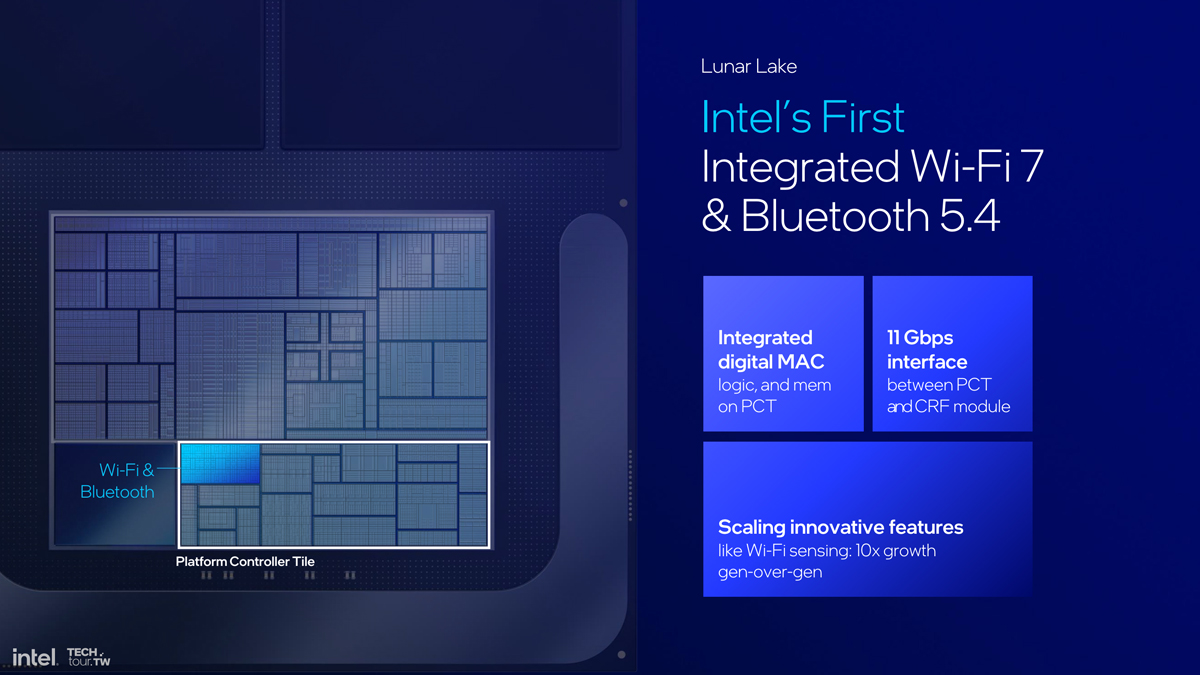
Lunar Lake is the first Intel platform with WiFi 7 integration, giving it up to 5x faster speed and up to 60% lower latency as well as premium multi-link operation implementation compared to systems without WiFi 7. It also makes use of Intel’s proprietary WiFi sensing technology with AI-based proximity detection, meaning that your laptop will be able to tell when you’re away from your desk and lock itself, as well as well you’re back at your desk and ready to unlock and use it.
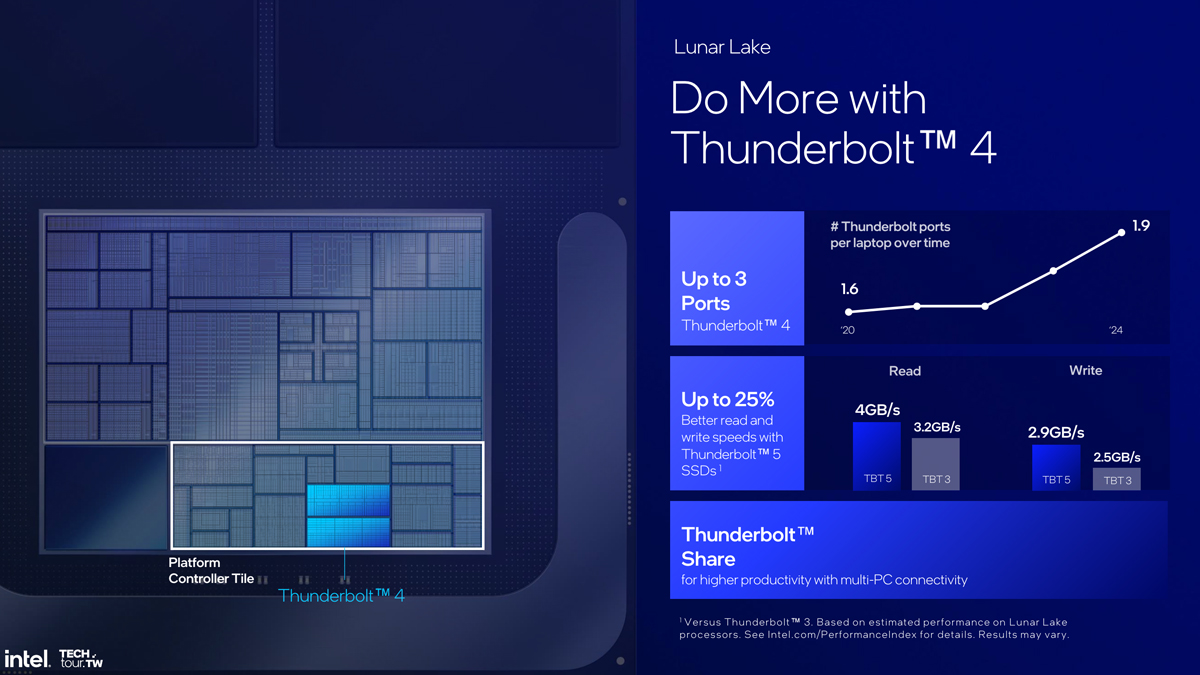
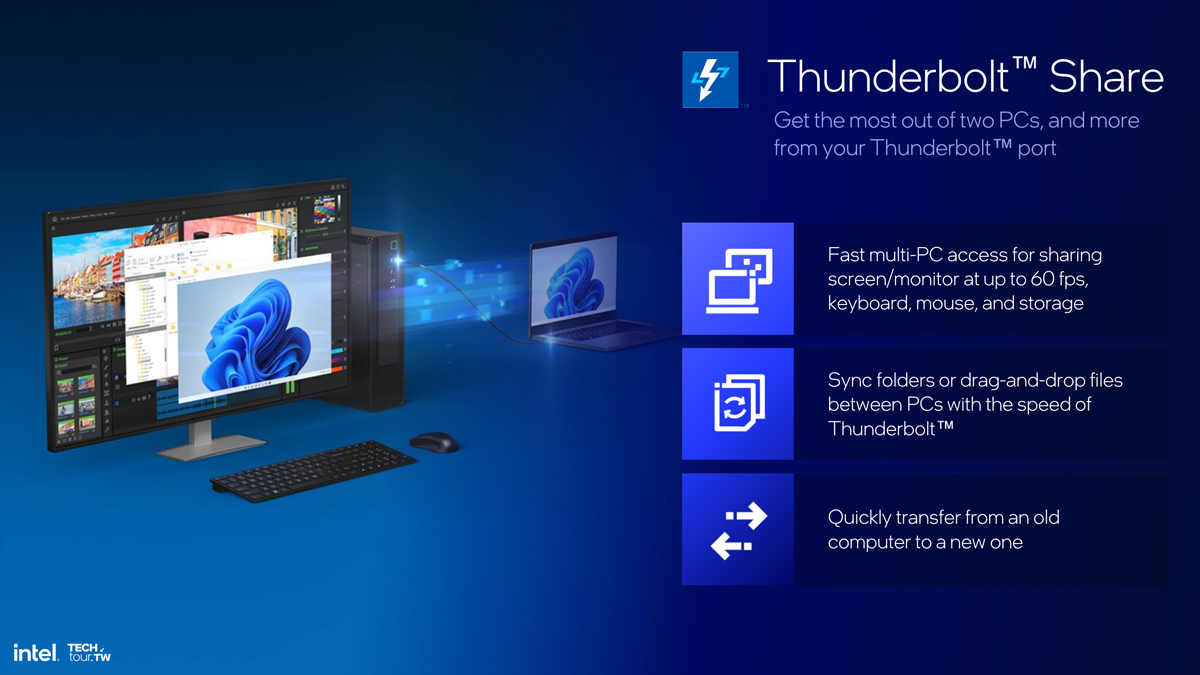
However, perhaps the most notable upgrade with Lunar Lake’s connectivity is with its improved support for Thunderbolt 4. All Lunar Lake laptops will come with at least two Thunderbolt 4 ports, with support for up to three of them depending on the manufacturer. It also offers up to 25% better read and write speeds when paried with Thunderbolt 5 SSDs. Then there’s Thunderbolt Share, which gives you an easy way to hook up different PCs and connect them together, even letting you drag and drop files between them all via Thunderbolt.
NPU 4 will offer three times more TOPs
As for the NPU, Lunar Lake will come with their new NPU 4 architecture that Intel says will play a key role in meeting three different goals: the growing diversity in AI workloads, an increase in app and OS integration as well as AI PCs now becoming multimodal. With NPU 4, it offers up to 48 TOPS of performance with an increased number of engines, better clock speeds and up to 1.5 times the efficiency for better performance per watt compared to its predecessor.
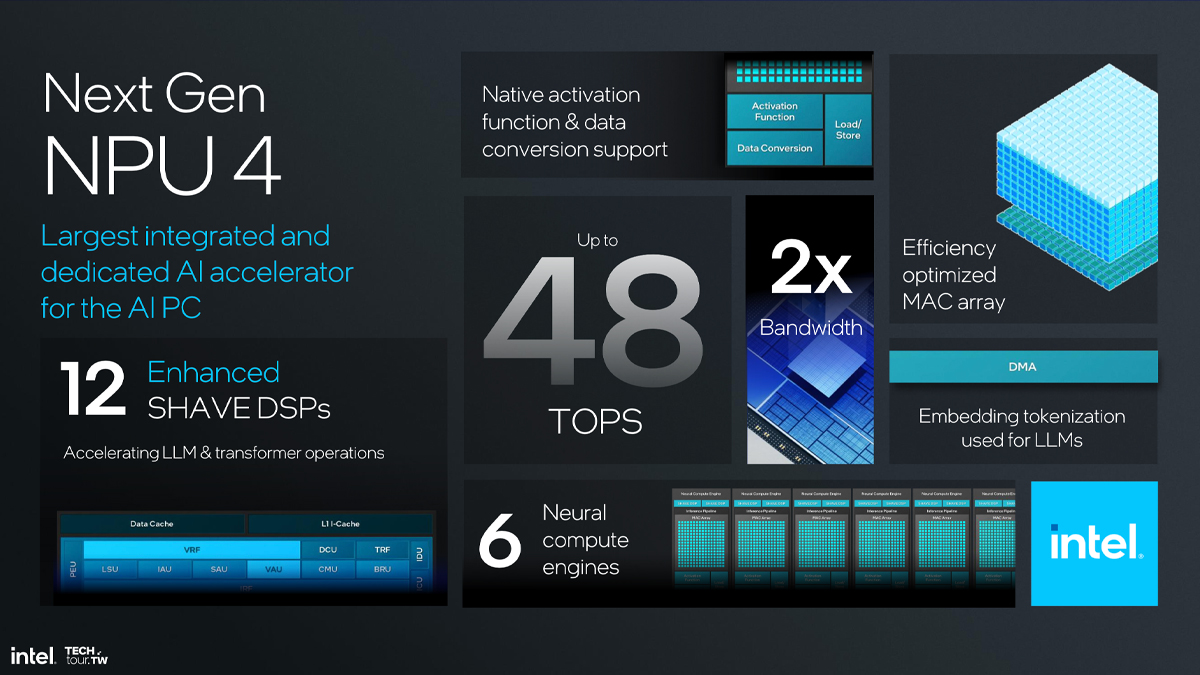
One key thing to note is that this essentially makes Lunar Lake compatible with Microsoft’s strict Copilot+ PC hardware requirements. Despite Meteor Lake powering many of the first wave of AI PCs that spawned earlier this year, Intel’s now last-gen mobile platform doesn’t actually meet Microsoft’s requirements for a Copilot+ PC, which asks for a processor that includes an NPU capable of a minimum of 40 TOPS. With Lunar Lake though, the up to 48 TOPS performance offers four times the NPU performance of Meteor Lake, and crucially meets Microsoft’s Copilot+ PC requirements too. In total, when combined with the CPU and the GPU, Lunar Lake will be able to offer users over 120 TOPS of performance spread across the chip.
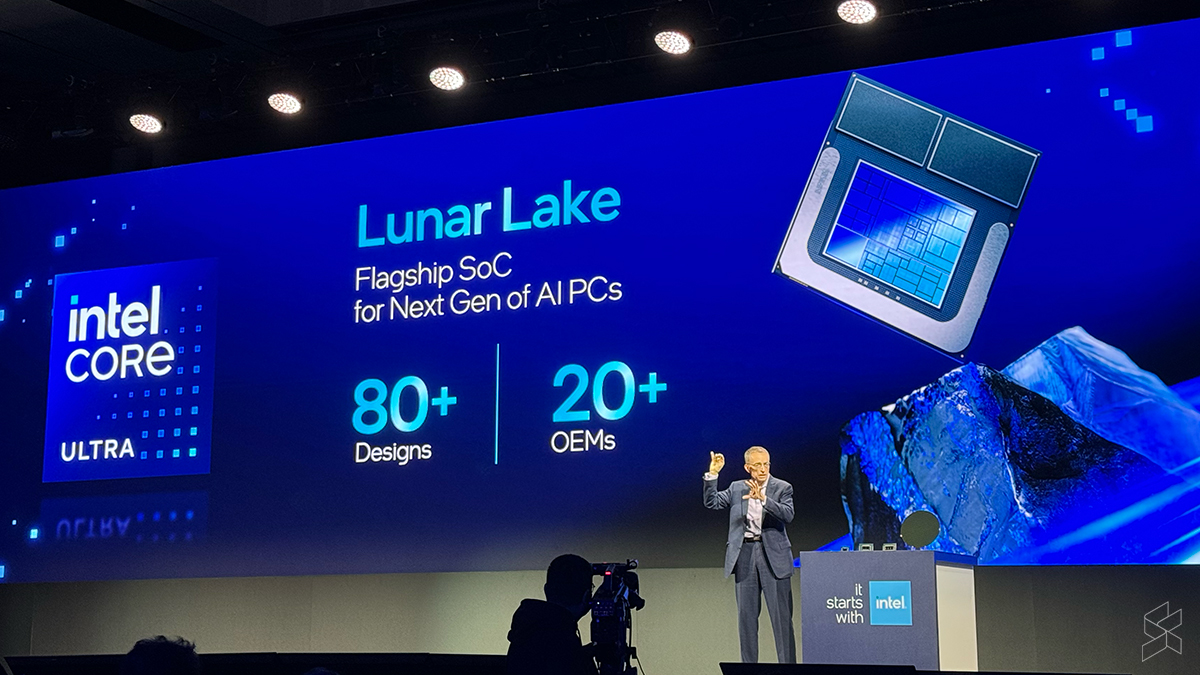
Intel says that Lunar Lake-based PCs will be arriving later this year in Q3 2024, with further details on specific SKUs to be announced at a later date. Gelsinger added that Lunar Lake is set to power over 80 different platforms designed by over 20 of their OEM partners, with over 40 million Core Ultra processors in the market by the end of the year.

